




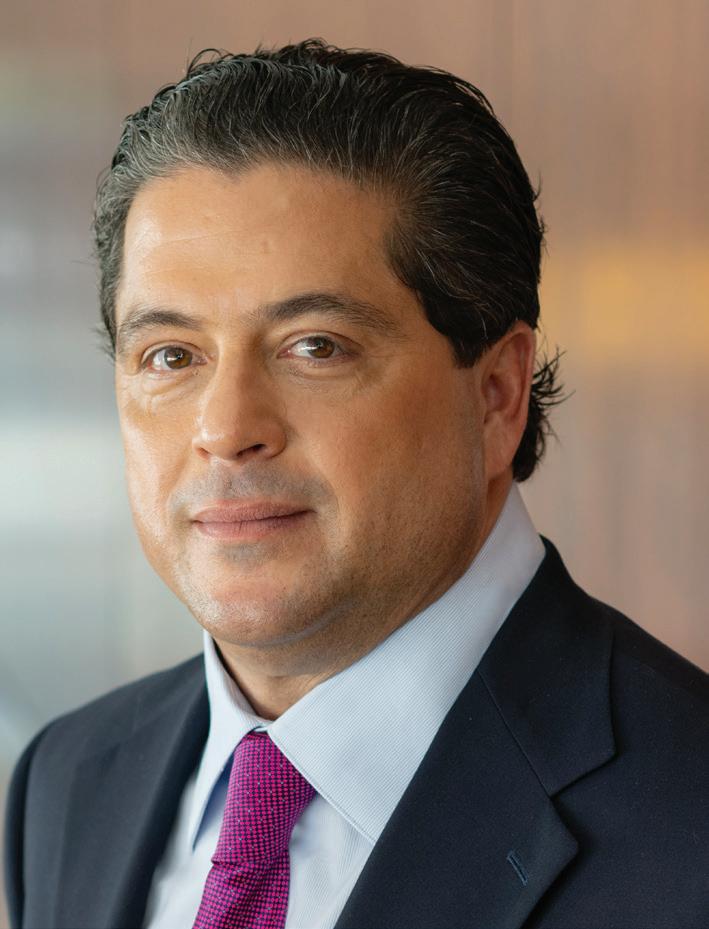
The summer months are a time when we often have opportunities to connect with friends and family.
RWJBarnabas Health is a proud partner in your community, providing emergency, wellness, preventative and specialty care all year round.
As the state’s largest and most comprehensive academic health care system, RWJBarnabas Health has the privilege to care for more than 3 million individuals every year. Whether we are caring for the sick and injured, advancing research that will change the health care landscape of tomorrow or working with our partners to increase access to healthy food and safe housing, our 41,000 team members and 9,000 physicians work tirelessly to deliver accessible, equitable and high-quality care to the residents of our great state.
Together, our team members are united by a series of eight core values that guide our work: accountability, compassion, curiosity, empathy, excellence, kindness, respect and teamwork. In every interaction we have, whether it be with a patient, a family member or a colleague, we are guided by these principles. I am extremely proud of my colleagues’ dedication to these values.
Thank you for the trust you place in RWJBarnabas Health as we pursue our noble mission to build and sustain a healthier New Jersey.
Have a safe, healthy and enjoyable summer!
Sincerely,
MARK E. MANIGAN PRESIDENT AND CHIEF EXECUTIVE OFFICER
www.rwjbh.org
RWJBarnabas Health complies with applicable federal civil rights laws and does not discriminate on the basis of race, color, national origin, age, disability or sex. For more information, see the link on our home page at www.rwjbh.org.
RWJBarnabas Health provides free language services, including qualified interpreters, to people whose primary language is not English. The following Language Assistance Services information is provided in multiple languages.
ESPAÑOL
ATENCIÓN: Si habla español, tiene a su disposición servicios gratuitos de asistencia lingüística.
Llame al 1.844.465.9474
繁體中文
注意:如果您使用繁體中文,您可以免費 獲得語言援助服務。
致电1.844.465.9474
한국어 주의: 한국어를 사용하시는 경우, 언어 지원 서비스를 무료로 이용하실 수 있습니다. 1.844.465.9474 로 전화하십시오.
PORTUGUÊS
ATENÇÃO: Se fala português, encontram-se disponíveis serviços linguísticos, grátis. Ligue para 1.844.465.9474 ગુજરાતી
UWAGA: Jeżeli mówisz po polsku, możesz skorzystać z bezpłatnej pomocy językowej. Zadzwoń pod numer 1.844.465.9474
ITALIANO
ATTENZIONE: In caso la lingua parlata sia l’italiano, sono disponibili servizi di assistenza linguistica gratuiti. Chiamata 1.844.465.9474
CONNECT WITH US
@RWJBarnabasHealth
@RWJBarnabas
RWJBarnabas Health
RWJBarnabas_Health
linkedin.com/company/
RWJBarnabasHealth


2. WELCOME LETTER. A community update from our President and Chief Executive Officer.
4. ‘KEEP WORKING AT IT.’ Support programs help a man with a spinal cord injury.
6. WHY TRAUMA MATTERS. Compassionate care recognizes the impact of past events.

8. WHEN A MURMUR TURNS SERIOUS. A woman receives coordinated heart care.
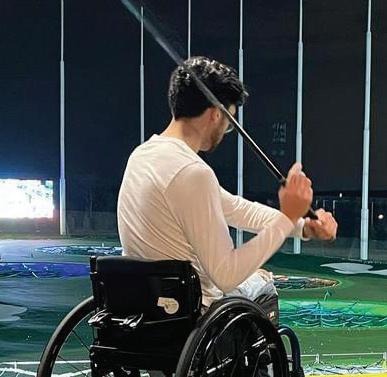

10. GUARD YOUR SKIN. Taking summertime steps can reduce rising cancer risks.
12. A HEART CARE HOME RUN. How an expert team caught a girl’s heart defect.
14. BACK ON THE BEAT. A security officer returns to duty after an innovative hip replacement.
16. STIGMA-FREE SUPPORT FOR MOMS. A new program helps women with substance use disorders.


18. BREATHING FREELY. A woman says that her lung transplant “changed my life completely.”
20. STAY SAFE THIS SUMMER. How to prevent common causes of injury and illness.
22. TEAMING UP WITH GOTHAM FC. RWJBarnabas Health becomes the official health care provider for a champion women’s soccer club.

INPATIENT REHABILITATION AND A SUPPORT PROGRAM HELP A MAN WITH A SPINAL CORD INJURY FOCUS ON THE FUTURE.
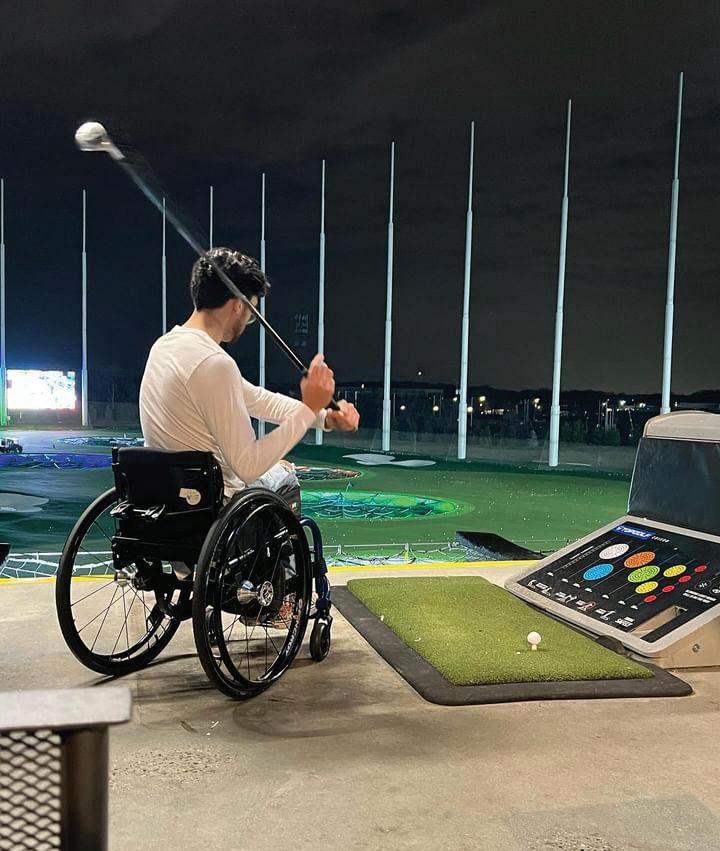

Adrian Lanza was just 17 when he sustained the spinal cord injury that changed his life. He was climbing a tree in front of his home in February 2015 when he fell. He dropped almost 30 feet, breaking his back.
After being rushed to receive back surgery at Robert Wood Johnson University Hospital in New Brunswick and spending 10 days in the hospital, Adrian was transferred to the Inpatient Spinal Cord Rehabilitation Program at Children’s Specialized Hospital (CSH).
It was the beginning of a long journey that also has included a unique CSH initiative called the True Grit Spinal Cord Program. True Grit provides
ongoing support and rehabilitation for young people with spinal cord injuries even after they have undergone long periods of rehabilitation.
But in the months immediately after his fall, Adrian—who now uses a wheelchair—focused on extensive and immersive inpatient therapy to restore as much function and independence as possible.
CRITICAL INPATIENT CARE
Adrian spent five months in the CSH Inpatient Spinal Cord Rehabilitation Program, which provides intensive, comprehensive rehabilitation services for infants, children and adolescents
with acquired, traumatic or congenital spinal cord dysfunction.
The program treats patients with all levels of spinal cord dysfunction, including those who are ventilator dependent or need medical support, special equipment or special feeding assistance through intravenous or central lines.
After providing a comprehensive evaluation, a specialty physician and a rehabilitation team plan a treatment program for each patient, meeting regularly to monitor progress and set goals. State-of-the-art equipment helps maximize each patient’s rehabilitation potential.
During his inpatient period, Adrian focused on positive thoughts. His attitude was so upbeat that, looking back, he says, “I had fun the whole time.”
He looked forward to daily therapy sessions and enjoyed getting to know therapists, nurses and doctors. Despite knowing the severity of his injury, he thrived by adopting the outlook that he would be OK and focusing on hopes for what he would accomplish.
Breakthroughs provided important encouragement. As Adrian learned to navigate his wheelchair, conquering a hill outside the hospital became a goal. “A big milestone for me was being able to roll up that hill,” he says. CSH’s Rehabilitation Technology Department helped him transition into various wheelchairs with less support as he progressed, which made Adrian increasingly hopeful about his new lifestyle.
Discharge planning begins as soon as a patient is admitted to inpatient rehabilitation. Patients and families are thoroughly educated about future needs and receive assistance in transitioning to home, school and community activities. The program provides comprehensive follow-up, from referring a patient to proper medical specialists to ensuring continuity of care.
Skills that Adrian learned during inpatient care helped him navigate
his new lifestyle out in the world. He stresses the importance of staying motivated through challenges and new activities—like those he went on to encounter through the True Grit program.
True Grit seeks to fill gaps in rehabilitation by hosting adaptive (modified) sports and leisure activities with support from peer mentors and experienced spinal cord injury therapists. Aimed at adolescents and youth ages 16 to 21, the program also provides a five-day residential rehabilitation experience hosted at Rutgers University.
Taking part in a dorm-based program away from home helps attendees gain independence, identify possible future leisure and recreational interests, socialize with peers and work toward achieving individual goals with help from physical, occupational, recreational and other forms of therapy. Participants also receive education about living with a spinal cord injury and transitioning to adulthood in a safe, encouraging environment.
The program’s overall impact is to provide healing, hope and inspiration that helps participants improve selfcare, mobility and quality of life. Such benefits further promise to reduce hospital readmissions and improve outcomes.
Playing adaptive wheelchair basketball in the program, Adrian—a former high school soccer player—found dormant athletic instincts kicking in as he rediscovered his love of sports. Through the program’s support, he also felt less alone when navigating real-life challenges.
“Seeing someone with a spinal cord injury who had fought to regain their independence then find the courage to get back to what they love is the feeling that True Grit was built on,” says Kassandra Boyd, OTD, OTR/L, an occupational therapist who began
Conditions treated at the Inpatient Spinal Cord Program at Children’s Specialized Hospital include:
• Traumatic spinal cord injuries
• Cervical spinal cord injuries
• Cervical-level injuries with ventilator management and weaning
• Spinal tumors
• Lower-level spinal cord injuries
• Spina bifida
• Transverse myelitis
• Nerve damage
• Spinal cord stroke
• Spinal stenosis
• Scoliosis
• Guillain-Barré syndrome
working with Adrian more than nine years ago.
Adrian has returned to True Grit and has had an impact on teens in the program. “He’s able to provide mentorship about adapted driving, for example, through lived experience that is more meaningful than if I were to provide education,” Boyd says. “It’s been such a privilege to see Adrian—who trusted me to help find his courage all those years ago—now be the one who others are looking to when they need some extra strength.”
True Grit “helps you get in touch with people who understand your situation,” says Adrian, who sums up his attitude toward life with a spinal cord injury this way: “Just keep working at it. You might not achieve what you want or what you thought you could, but it’s important to try to achieve the most you can and focus on your own progress.”

A NEW MODEL OF COMPASSIONATE CARE RECOGNIZES HOW PAST EVENTS CAN AFFECT HEALTH AND BEHAVIOR.
How do you respond to a person whose behavior you find difficult or troubling? That question lies at the heart of behavioral health training being implemented at RWJBarnabas Health (RWJBH).
The training educates staff about an approach to patients called traumainformed care. Its goal is to enhance understanding, compassion, empathy and relationships with patients, especially those who have experienced trauma and often are affected by mental health conditions.
“Trauma-informed care is a shift in the paradigm of how we treat patients and collaborate with them,” says Nicole Powasnick, MSN, RN, NEA-BC, CEN, Chief Nursing Officer at the RWJBH Behavioral Health Center in Toms River, who is leading the initiative systemwide. “It’s about relationships and showing patients that we are in this together.”
The new approach promises not only to help patients get the medical and behavioral health services they need but also to help staff manage stress, fatigue and emotional fallout that can arise from providing care.
Trauma-informed care flips a number of approaches often found in traditional models of care. “The traditional approach is to say that health care providers are the authorities and we know best,” Powasnick says. “But that approach doesn’t meet people where they are and often doesn’t work with people who have been traumatized.”
Trauma is important because it is common among patients and can affect both health and behavior. “It could be due to one event, a series of events or a set of circumstances that are threatening or harmful,” Powasnick says. “Trauma can have lasting effects on a person’s physical, emotional or spiritual health and their ability to function.”
Sources of trauma range widely and can include sexual abuse, natural disasters, violence and childhood neglect. “But people experience and respond to trauma differently,” she says.
Those affected by trauma often find it hard to form healthy relationships and may behave in ways that have helped
them cope in the past but can distress others. “They often have more difficult health outcomes than people who don’t have trauma,” Powasnick says.
When health care becomes trauma-informed, providers realize the widespread impact of trauma and understand potential paths for recovery; recognize signs and symptoms of trauma; and integrate this knowledge into policies, procedures and practices that also avoid re-traumatizing people.
Trauma-informed care differs from traditional approaches by:
• Prioritizing collaboration instead of control
• Viewing negative behavior as existing for a reason that needs to be figured out rather than simply needing to be stopped
• Placing priority on building emotionregulating skills instead of getting rid of negative behavior
• Seeing relationships—not rewards and punishment—as the primary agent of change
• Acting as collaborators, not as authorities or experts
• Expecting to be affected by emotions that need to be talked about and managed, not striving to be invulnerable or considering emotions to be unprofessional or weak
Practicing trauma-informed care can de-escalate tense interactions and help providers realize that they don’t need to take patient behavior personally. “Once you recognize that someone acts this way because of something in their past, you can respond in a different way that builds relationships and lets the patient know that you are not the enemy but are here to help them,” Powasnick says.
The new initiative is a significant advance for RWJBH Behavioral Health Services, which, together with Rutgers University Behavioral Health Care, is a leading provider of integrated mental health and substance abuse treatment services, serving over a halfmillion people
each year.
RWJBH training for traumainformed care launched at the Behavioral Health Center and is now being implemented for behavioral health services at Trinitas Regional Medical Center in Elizabeth and Jersey City Medical Center. Training is also planned for Monmouth Medical Center in Long Branch and Clara Maass Medical Center in Belleville, with additional sites and service lines to follow.
Staff who have undergone training for trauma-informed care readily see how it helps both patients and providers.
“The training helps both patients and my own team,” says Komi Awumey, security manager at Trinitas. “Trauma patients sometimes feel they’re not being supported and that we don’t care. We help them understand that they’re not alone and we’re here to help.”
He cites the example of a patient who was denying being intoxicated and was creating a disturbance. “One of our trained officers said, ‘I like your hair,’” Awumey says. “The whole conversation changed. She began saying things like, ‘I don’t know why I keep taking alcohol and drugs.’ Something as simple as a compliment can be very helpful for everybody.”
Ellen Hutchinson, an administrative assistant at Trinitas who supervises the reception area of the adult outpatient psychiatric unit, applied concepts about listening respectfully and establishing rapport with a patient who was becoming agitated over a seemingly minor concern.
“The smile, reassurance and tender gesture I gave calmed her down so she could get to her appointment and not raise a ruckus,” Hutchinson says. “I have known this patient for many years, but training enhanced my skill and confidence in approaching her.”
Hutchinson even finds the principles of trauma-informed care helpful outside of work. “I would recommend this training for anyone,” she says. “You can use it anywhere.” To

A WOMAN RECEIVES THE CRITICAL HEART SURGERY—AND COORDINATED FOLLOW-UP—SHE NEEDS.
As a commercial paralegal for a busy law firm, Linda Kurak is always in motion. “I assist attorneys in coordinating closings, reviewing title commitments and preparing documents to keep everything moving smoothly,” she says.
Early last year, however, the 73-yearold Iselin resident began to develop signs of fatigue. She wasn’t sleeping well and sometimes had trouble negotiating the front step to her house.
She figured the cause was related to her heart murmur, which she had lived with her whole life. “I was struggling to get through each day, and when I would go to bed, I could actually hear my murmur,” she says.
Still, Linda put off seeking treatment. Then on April 1, 2023, she felt pain in her chest that radiated down her left arm. She headed to an urgent care clinic near her home. “They did an EKG and told me I needed to go to an emergency room right away,” Linda says. She immediately headed to Robert Wood Johnson University Hospital (RWJUH) Rahway.
Inside the RWJUH Rahway Emergency Department, doctors rushed to stabilize Linda and treat her symptoms. Cardiologist Howard Levitt, MD, worked to find the root cause of her problem. “Her murmur was consistent with a condition called aortic stenosis,” says Dr. Levitt, Division Director, Cardiology, at RWJUH Rahway.
Aortic stenosis occurs when the aortic valve—the largest of the heart’s four valves—begins to narrow, restricting blood flow to the rest of the body. “The degree of narrowing can be mild, moderate, severe or critical,” Dr. Levitt says. Linda’s stenosis had reached the critical level.
In the past, open heart surgery was


the only treatment for severe aortic stenosis. Today, patients like Linda can benefit from a newer and less invasive approach called transcatheter aortic valve replacement (TAVR).
During a TAVR procedure—performed in a cardiac catheterization laboratory— an interventional cardiologist inserts a catheter into an artery, usually in the groin, then threads a replacement valve through the catheter up into the heart. Once the new valve is in position, the doctor opens it using the catheter, restoring proper blood flow.
“TAVR was initially just used in patients who were too high-risk for open heart surgery, but over time, it’s proven to be effective for people at moderate and low risk, too,” Dr. Levitt says. “In Linda’s case, I knew TAVR would allow her to get back on her feet and recover quickly.”
As a patient at RWJUH Rahway, Linda had seamless and convenient access to the highly specialized TAVR procedure at Newark Beth Israel Medical Center (NBI). Both hospitals are part of the RWJBarnabas Health system, which also meant that Linda could return to RWJUH Rahway and receive coordinated follow-up care locally.
“We operate as one Division of Cardiology that works across two locations,” Dr. Levitt says.
As soon as Linda received the goahead for TAVR, Dr. Levitt and his team arranged for transportation by ambulance to NBI. “We made it there in just 12 minutes,” Linda says. Interventional cardiologist Sergio Waxman, MD, MBA, Chief of the Division of Cardiology at NBI, performed Linda’s TAVR procedure. She returned home the next day.
“The nurses and everyone at both RWJUH Rahway and NBI were fantastic,” Linda says. “Everybody was so nice. And Dr. Levitt took really good care of me.
While aortic stenosis is the most common form of heart valve disease, it often shows only mild or moderate symptoms and can be hard to diagnose. “It tends to come on gradually as people age,” says Howard Levitt, MD, Division Director, Cardiology, at Robert Wood Johnson University Hospital Rahway.
Common symptoms in addition to having a heart murmur include shortness of breath, fatigue and dizziness. “The problem is that most people who experience these symptoms chalk them up to aging or being out of shape, so they don’t seek help,” says Dr. Levitt. “That means they may not get care until it’s an emergency.”
If you experience any of the symptoms of aortic stenosis—or live with a murmur—seek care from a cardiologist.
To learn more about transcatheter aortic valve replacement, visit www.rwjbh.org/tavr Whoever your heart beats for, our hearts beat for you. To connect with a top cardiovascular specialist at RWJBarnabas Health, call 888.724.7123 or visit www.rwjbh.org/heart.
He’s very easygoing and personable. He addressed all of my concerns and made me feel comfortable.”
Just two weeks after undergoing the TAVR procedure, Linda was back to work. In the months since, she has faithfully attended followup visits at RWJUH Rahway’s outpatient heart clinic, which offers both scheduled and walk-in appointments.
She also has made a few lifestyle changes to keep her heart healthier in the long term. “I don’t eat any more fried foods or fat, and I follow a lowsodium diet,” she says. “I cut down on the sweets, too.”
Linda’s experience taught her a valuable lesson that she now shares with others. “When your body tells you something, listen,” she says. “I should have sought care for my heart murmur sooner. I’m fortunate everything worked out the way it did.”

Skin cancer is becoming more common. One in two men and one in three women will develop nonmelanoma skin cancer in their lifetime. Having a nonmelanoma type makes you at higher risk of developing more skin cancers, including melanoma, the most dangerous form. These trends are especially concerning during summer, when skindamaging ultraviolet (UV) rays are most
intense and sunshine is most abundant. But advice from experts at RWJBarnabas Health (RWJBH) and Rutgers Cancer Institute—the state’s only NCIDesignated Comprehensive Cancer Center—can help lower the risks of developing skin cancer, catch worrisome skin growths early and treat threats both quickly and effectively.
Here are key steps to keeping skin cancer-free.
Protection begins with avoiding or blocking radiation from sunlight. • Seek shade: Stay out of the sun if possible, especially between 10 a.m. and 4 p.m., when UV rays are strongest. Keep in mind that UV exposure occurs even on cloudy days, and radiation from the sun can damage skin regardless of skin tone. UV rays can also bounce off surfaces such as
water, so avoid reflected light as well.
• Cover up: If possible, wear darker fabrics with tighter weaves, which provide the greatest UV protection, or wear clothing designed to protect against the sun. Wear a hat, preferably broad-brimmed, and UV-filtering sunglasses.
• Apply sunscreen: Cover exposed skin with ample sunscreen whenever you’re outdoors. Don’t rely on makeup for protection; slather your face with sunscreen that has a sun protection factor (SPF) of at least 30 before applying makeup. Reapply sunscreen at least every two hours.
Be alert for anything that doesn’t look right. Especially watch moles or spots for signs of dangerous melanoma that are spelled out by a memory aid known as the ABCDEs.
• A for asymmetry: One side of a mole doesn’t match the other.
• B for border: Edges are irregular, ragged, notched or blurred.
• C for color: Color varies and may include different shades of brown, black, tan or even red, white or blue.
• D for diameter: A spot is larger than about the size of a pencil eraser— typical of malignant (cancerous)
RWJBarnabas Health, in partnership with Rutgers Cancer Institute—the state’s only NCIDesignated Comprehensive Cancer Center—provides closeto-home access to the most advanced treatment options. To schedule an appointment with one of our cancer specialists, call 844.CANCERNJ or visit www.rwjbh.org/beatcancer
moles, though malignant growths can sometimes be smaller at first.
• E for evolution: The mole changes in size, shape or color, or develops new traits such as growing higher or crustier.
When skin cancer is caught early, treatments have high success rates. A collaborative, multidisciplinary team of RWJBH/Rutgers Cancer Institute surgical, radiation and medical oncologists along with radiologists, pathologists, nurses and social workers create an individualized plan for each patient that often includes surgery to remove cancerous cells. Methods may include:
• Excision: The tumor and some normal tissue around it are cut from the skin (simple excision) or shaved from the skin’s surface (shave excision).
• Mohs micrographic surgery: A surgeon cuts the tumor from the skin in thin layers, removing as little normal tissue as possible and inspecting each layer and its edges through a microscope until no more cancer cells are seen.
• Electrosurgery: The tumor is cut from the skin and the area is treated with an electric current that curtails bleeding and destroys any remaining cancer cells.
• Cryosurgery: Abnormal tissue is destroyed by freezing it.
• Brachytherapy: A small pellet placed next to a tumor delivers small, precise doses of radiation to get rid of nonmelanoma cancers.
• Advanced therapies: A variety of immunotherapy treatments, targeted therapy, radiation and, less commonly, chemotherapy can be used for cases of advanced skin cancer and/or when patients are unable to have surgery. Clinical trials can also be considered.

Rutgers Cancer Institute, the state’s only Comprehensive Cancer Center as recognized by the National Cancer Institute (NCI)— together with RWJBarnabas Health (RWJBH), the state’s leading academic health system— scored in the “exceptional” range and was recently redesignated by the NCI, placing it among the top cancer centers reviewed in 2023.
Here, voices of leadership highlight ways in which being an NCI-Designated Comprehensive Cancer Center benefits patients.
ADVANCED CARE: “Redesignation by the NCI reaffirms the value Rutgers Cancer Institute provides to our state through research, treatment, prevention and education, and our commitment to providing integrated, cutting-edge cancer care to those in New Jersey and beyond.”
– Steven K. Libutti, MD, FACS, Director, Rutgers Cancer Institute, and Senior Vice President, Oncology Services, RWJBH WORLD-CLASS RESOURCES: “This incredible achievement underscores the partnership between RWJBH and Rutgers Cancer Institute and our shared commitment to provide our patients and communities with access to world-class physicians, clinical trials and services that are transforming cancer care in New Jersey.”
– Mark E. Manigan, President and Chief Executive Officer, RWJBH RESEARCH AND INNOVATION: “Through pioneering clinical trials and cutting-edge research, Rutgers Cancer Institute has evolved our understanding of this disease and helped countless families overcome devastating diagnoses.”
– Phil Murphy, Governor, New Jersey
To learn more about prevention and treatment of skin cancers at RWJBarnabas Health and Rutgers Cancer Institute, visit www.rwjbh.org/beatcancer
HOW AN EXPERT TEAM OF PEDIATRIC SPECIALISTS CAUGHT AN ACTIVE GIRL’S HEART DEFECT

In many ways, Lily Diver is a typical 9-year-old. She plays softball and basketball, and cheers with a local cheer gym. “She also loves skin care, Stanley cups and Taylor Swift,” says her mom, Denise Leonard. The youngest of three children, Lily will be in third grade at William Shemin Midtown Community School in Bayonne, where she lives with Denise, a teacher at the school.
What is not typical about Lily: She was born with a critical heart defect.
Although she had lived with the condition her whole life, she and her mother only found out about it in February. That’s when Lily was diagnosed with coarctation of the aorta by Donald C. Putman, MD, Division Chief, Pediatric Cardiology, at Cooperman Barnabas Medical Center—part of the Children’s Health network at RWJBarnabas Health—and a member of RWJBarnabas Health Medical Group.
Coarctation is a narrowing of the aorta, the main artery that carries blood from the heart to the rest of the body. The congenital (present at birth) condition forces the heart to pump harder to move blood.
While the narrowed artery can cause problems including chest pain, headaches, high blood pressure and shortness of breath, no symptoms ever stood out to Denise.
Denise and Lily discovered that something was amiss almost by happenstance.
In October 2023, Denise took Lily for a flu shot. During the routine appointment, Vincent Serafino, MD, a pediatrician at Jersey City Medical Center, noticed a heart murmur. Knowing that Denise had recently undergone heart surgery for a congenital valve condition, Dr. Serafino suggested that she take Lily to a pediatric cardiologist as a precaution.
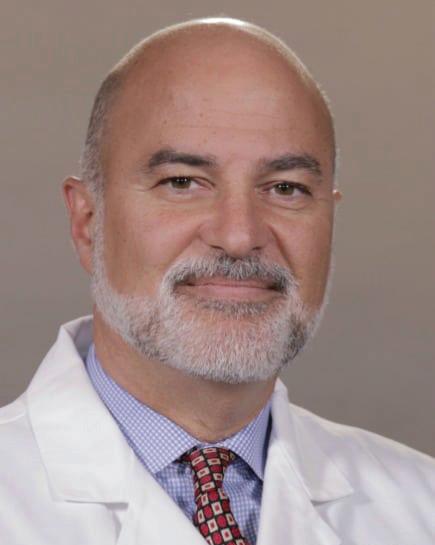
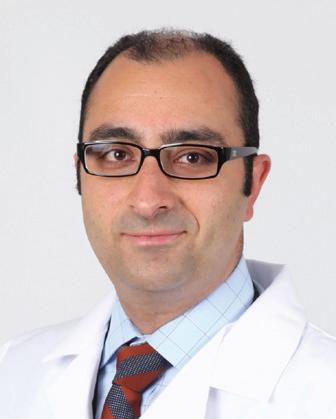
Denise was referred to Dr. Putman, who conducted a thorough exam and several tests. He noted telltale discrepancies in Lily’s blood pressure and pulse. “The blood pressure in Lily’s right arm was 148 over 85, which is high even for an adult,” says Dr. Putman. “However, the blood pressure in her left leg was 105 over 78.” Such a mismatch is a classic indicator of aortic coarctation.
“Dr. Putman was very surprised that Lily wasn’t experiencing any symptoms and was as active as she is,” says Denise.
Now clued in to a potential problem, Denise realized in retrospect that Lily had in fact experienced headaches. “I attributed them to allergies or not wanting to go to school,” Denise says. In reality, Lily’s coarctation had caused severe high blood pressure that triggered head pain.
Dr. Putman ordered an electrocardiogram (EKG) and an echocardiogram, or ultrasound of the heart. He also referred Lily to the Children’s Heart Center at Children’s Hospital of New Jersey (CHoNJ)—part of a program at Newark Beth Israel Medical Center for treating congenital heart disease in infants, children and adults.
At CHoNJ, Mark Michael, DO, a pediatric cardiologist and a member of RWJBarnabas Health Medical Group, performed a cardiac CT scan.
The imaging not only confirmed the diagnosis but also provided important details. Lily’s defect was a particularly long form known as long-segment coarctation. What’s more, the arch where the aorta curves like a candy cane to deliver blood to the body was underdeveloped—a condition known as aortic arch hypoplasia.
Denise consulted Rajiv Verma, MD, Director of the Children’s Heart Center, to discuss the findings and options for next steps.


Children’s Hospital of New Jersey (CHoNJ) is New Jersey’s most comprehensive pediatric cardiac surgery center and draws patients from throughout the state and beyond.
RWJBarnabas Health also offers extensive pediatric cardiology services at the Anne Vogel Family Care and Wellness Center, part of The Unterberg Children’s Hospital at Monmouth Medical Center; the Pediatric Specialty Center at Cooperman Barnabas Medical Center; and The Bristol-Myers Squibb Children’s Hospital (BMSCH) at Robert Wood Johnson University Hospital in New Brunswick.
Advanced cardiac services for children available at both CHoNJ and BMSCH include lifesaving technologies such as pediatric extracorporeal membrane oxygenation (ECMO), a critical form of life support. The programs together offer care for a wide range of heart issues in children, including valve conditions, structural defects, arrhythmias, heart failure, tumors and sudden cardiac arrest.
Lily was in urgent need of treatment. But Dr. Verma, cardiac surgeon Emile A. Bacha, MD, and their team had to weigh the merits of different approaches carefully.
One option was to use a catheter, or tube, to reach the coarctation through blood vessels and open the narrowed passage with a balloon or stent. This minimally invasive approach, known as angioplasty, is often recommended for long-segment coarctation because it does not involve cutting the chest and recovery is relatively fast.
But a child like Lily would eventually outgrow a stent, so it later would need to be revised. “Lily was too young for a definitive transcatheter-based procedure, and her aortic arch was small,” Dr. Bacha says.
The team looked to surgery as a more viable option. “Though surgery is technically challenging for a longsegment coarctation, the likelihood of Lily ever needing another procedure would be small,” Dr. Verma says.

Dr. Verma explained the pros and cons to Denise. “I opted for open heart surgery because it was a fix rather than a BandAid,” she says. “I felt that the more we can do now, the
better for Lily in the long term.”
On March 8, Dr. Bacha performed Lily’s four-hour surgery, repairing the aortic coarctation and reconstructing the arch by removing the narrowest portion and augmenting the entire arch with a patch.
Lily took it all in stride, asking Dr. Bacha before surgery if she could play in a championship basketball game that night. (“Let’s see how you feel first,” he said.)
“She was a star patient and handled everything like a champ,” says Kelly Thibault, RN, MSN, CPNP, a nurse practitioner in pediatric cardiac surgery who cared for Lily from diagnosis through recovery.
While she was hospitalized, Lily’s biggest concerns were matters like the availability of blue ice pops and the unpleasant taste of pain-relieving acetaminophen. “Considering that she had open heart surgery, I’ll take those complaints any day!” Denise says.
Lily will need to see a cardiologist for the rest of her life, Dr. Verma says, but restrictions on her activity were short-term. She should be able to fully participate in sports this school year.
To learn more about the Children’s Health network at RWJBarnabas Health, visit www.rwjbh.org/childrenshealth
A SECURITY OFFICER RETURNS TO DUTY AFTER AN INNOVATIVE HIP REPLACEMENT SURGERY.
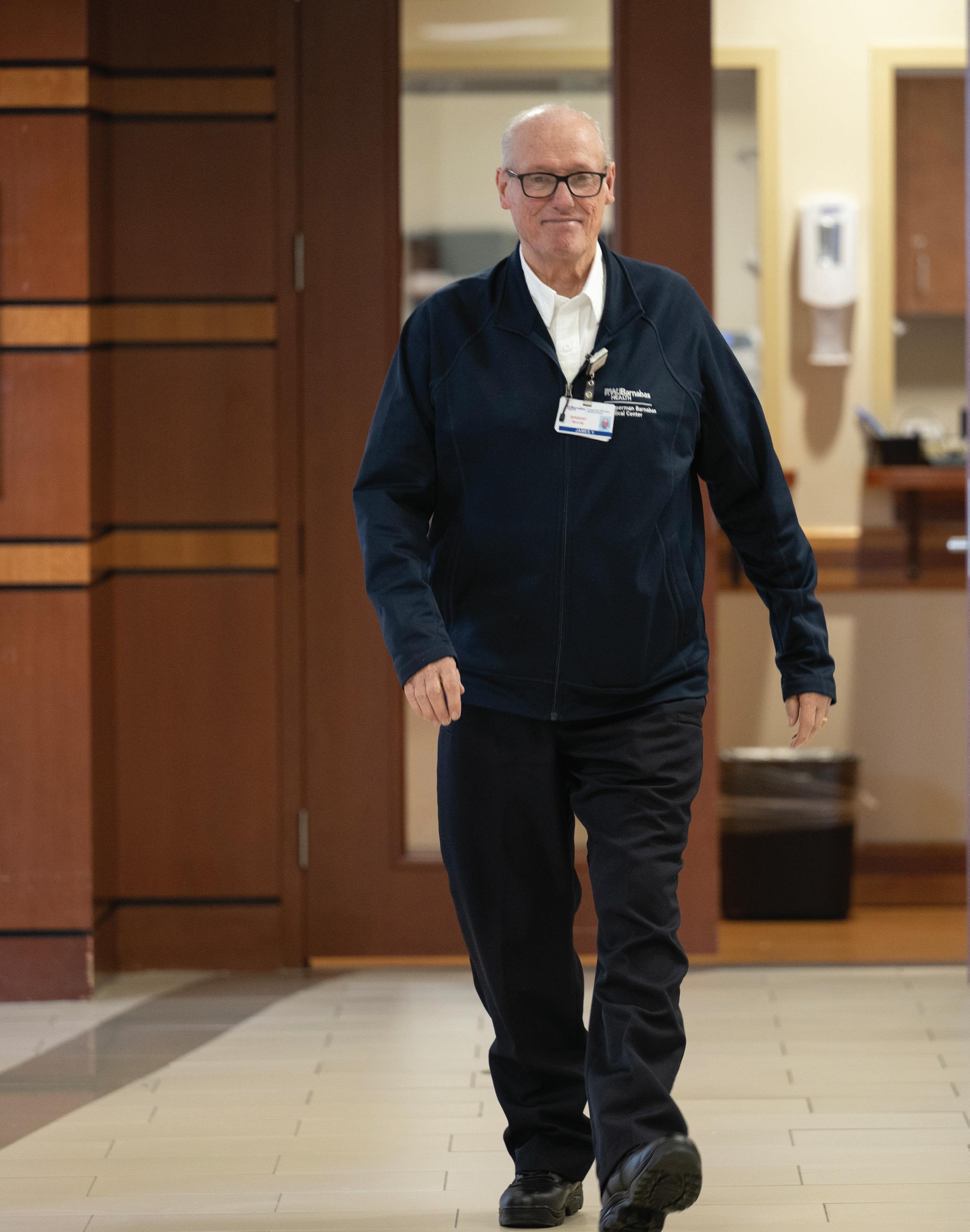
Jim Young can once again make his daily rounds at the Ambulatory Care Center at
Medical Center now that hip replacement surgery has relieved severe pain from arthritis.
Working a beat is nothing new for Jim Young. He previously served as an officer with the Chatham Borough Police Department and spent nearly two decades as a fraud investigator for a leading insurer.
Through it all, he has had a not-sofriendly companion: arthritis. “It’s a family thing,” says Jim, 77, of Chatham. “I happen to have it the worst.”
Jim’s arthritis has caused aches and pains in various joints over the years, so he wasn’t overly surprised when, in late 2022, he experienced some discomfort in his right hip.
“It started off as a slow pain,” he says. But soon, it threatened to take him off his latest beat—working as a security officer inside the Ambulatory Care Center (ACC) at Cooperman Barnabas Medical Center (CBMC).
By mid-2023, Jim’s pain had become almost unbearable. He struggled to complete a round of golf. Skiing was out of the question. Even work became challenging.
“It was difficult getting around from station to station,” Jim says. “I was in constant discomfort. At times it felt like a heavy ache. Then, from out of nowhere, I’d get a very sharp pain. I couldn’t tie my shoes, put socks on or bend over.”
When he finally was ready to get his knee looked at by a doctor, Jim found an expert located right on his beat: Richard S. Yoon, MD, FAAOS, an orthopedic surgeon at CBMC and a member of RWJBarnabas Health Medical Group.
“He had just opened up an office in the ACC, and I got to know his staff pretty well,” Jim recalls. “They saw me limping one day and told me, ‘You should really see Dr. Yoon. He’s a great surgeon.’ So, I booked an appointment with him.”
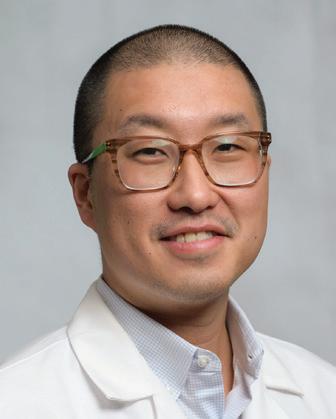
Orthopedic surgeon Richard S. Yoon, MD, FAAOS, is highly experienced in performing total hip replacement surgery and in most cases uses the direct anterior approach because the advanced method offers unique advantages for many patients.
In a traditional posterior approach, surgeons access the hip joint through an incision close to the buttocks. This involves cutting through the hip muscles and soft tissue.
In a direct anterior approach, surgeons make an incision in the front of the hip and access the joint through a naturally occurring space between muscles. This technique minimizes post-surgery pain, promotes faster healing and reduces the risk of complications.
During the procedure, patients lie on a table designed specifically for the direct anterior approach. Dr. Yoon uses interoperative fluoroscopy—a special type of X-ray—to guide the hip implant into proper position.
“The anterior approach is probably my favorite surgery to do because patients have such good results,” Dr. Yoon says. “In fact, I sometimes have to tell patients not to overdo it during recovery because they feel so good.”
Almost anyone can benefit from the direct anterior approach when it’s performed by a skilled surgeon. (Exceptions include patients with morbid obesity, who generally don’t qualify for the approach.) “At Cooperman Barnabas Medical Center, we see a lot of patients who have active lifestyles and want to stay on the go,” Dr. Yoon says, “and they tend to benefit the most.”
To help reduce Jim’s pain, Dr. Yoon explored potential treatment options. “Conservative measures like therapy, antiinflammatories and even injections are a possibility for most patients,” Dr. Yoon says. “With Jim, his discomfort was so severe that we knew those would only be temporary measures.”
Total hip replacement surgery would be Jim’s best chance to eliminate his pain for good. Dr. Yoon specializes in a direct anterior approach to hip replacement (see sidebar), a muscle-sparing, minimally invasive technique that allows for a faster recovery.
“Dr. Yoon told me he’d perform the surgery through the front, not the back, which would make it easier on me,” Jim says.
surprised me.”
Three months after surgery, Jim returned to work. A month later, he played golf again for the first time. “I have normal activity now,” he says. “I go to work every day, walk through the entire facility and have no difficulties walking or bending.”
While Jim’s hip is pain-free, arthritis is now affecting his right shoulder. He’s now scheduled for shoulder replacement surgery. And he’s chosen Dr. Yoon to do the job once again.
“He is one of the easiest doctors I’ve ever dealt with,” Jim says. “He has a tremendous bedside manner, takes time to explain things to you and always has a smile.”
At that appointment, Dr. Yoon ordered an X-ray that identified the root cause of Jim’s pain. His degenerative arthritis had deteriorated the cartilage around his right hip, causing bone-on-bone contact.
In September, Dr. Yoon performed Jim’s anterior hip replacement surgery. “I took one pain pill at 2 a.m. the day after surgery, and that was all,” Jim says. “I had absolutely no discomfort, which really
To others who are suffering from hip pain due to arthritis, Jim offers some advice. “There’s no need to fear hip replacement surgery,” he says. “I have friends who were concerned about having it, but once they did, they told me, ‘I don’t know why I put it off. It was the best thing I ever did.’”

A NEW PROGRAM HELPS PREGNANT WOMEN WITH SUBSTANCE USE DISORDERS GET THE CARE THEY NEED.
It’s a common scenario: A woman is pregnant but also has a substance use disorder that makes it difficult for her to quit using alcohol, tobacco, marijuana or other drugs during pregnancy. She may welcome help to overcome her disorder, yet she may also feel reluctant to speak openly about it.
To address such issues, collaboration with the Institute for Prevention and Recovery (IFPR) at RWJBarnabas Health
(RWJBH) is helping obstetric providers learn how to recognize and respond to mothers with substance use disorders to ensure they get the treatment and referrals they need.
The initiative is important because substance use and substance use disorders during pregnancy are associated with adverse outcomes for moms and babies, and are the leading cause of pregnancyassociated deaths in the state, according to the most recent New Jersey Maternal Mortality report.
Yet pregnant and postpartum women still experience barriers to treatment for substance use disorders despite many
positive changes, says Suzanne Spernal, Senior Vice President of Women’s Services at RWJBH, which delivers more babies than any other health care system in New Jersey. Spernal is also cochair of the New Jersey Perinatal Quality Collaborative, a multiyear initiative funded by the Centers for Disease Control and Prevention.
“Providers want to support their patients but often feel they are not equipped with appropriate training and resources to address the complex and challenging needs of women and families impacted by addiction,” Spernal says.
In addition, stigma about substance use creates a significant barrier to care, especially for mothers. “A recent national study found that women are more likely to report stigma as a barrier to treatment compared with men,” Spernal notes.
One example of this multi-intervention initiative is the grant-funded maternal health program being offered at Robert Wood Johnson University Hospital in New Brunswick. The design of IFPR’s maternal health program builds in part on previous successes of peer-based support from recovery specialists who themselves are in long-term recovery from a substance use disorder. The new program employs maternal health recovery specialists who have also been trained as doulas.
The IFPR was awarded one of two nearly $1 million federal maternal health grants to address substance use issues during and after pregnancy with the goal of reducing related maternal deaths.
“We are bringing all of our experts together—including the voices of women with lived experience—to design a patient-centered, integrated care model that improves engagement and retention of pregnant and parenting women in substance use disorder treatment programs,” Spernal says. The new model ultimately promises to reduce stigma and barriers to care.
“The first step to decreasing mortality
RWJBarnabas Health (RWJBH) has received numerous national accolades for maternal health services and outcomes, including U.S. News & World Report recognition as 2023-2024 Best Hospitals for Maternity Care for Cooperman Barnabas Medical Center (CBMC), Monmouth Medical Center (MMC), Robert Wood Johnson University Hospital (RWJUH) in New Brunswick and RWJUH Somerset.
The system has also implemented structured, evidence-based models of care for healthy moms, babies and families throughout the pregnancy journey, including:
• Centering Pregnancy, a program of clinically led group prenatal care that brings together moms with similar due dates to support healthy pregnancies and babies. It was launched at CBMC and Newark Beth Israel Medical Center and will soon be available at RWJUH.
• TeamBirth NJ, a national program to support better provider and patient communication to enhance the birthing experience and improve outcomes for moms and babies. It was launched in 2022 at CBMC and MMC, and will be expanded to include RWJUH and Jersey City Medical Center.
• The RWJBH Center for Perinatal Mood and Anxiety Disorders, a first-in-state facility that increases access to care for those affected by this most common complication of childbirth. It opened at MMC in 2017 and expanded to the Anne Vogel Family Care and Wellness Center in Eatontown and a second location at CBMC in Livingston.
is for providers to recognize substance use disorder as a medical condition that can be treated in our own hospitals and offices,” says Alexis LaPietra, DO, Director of Addiction Medicine, RWJBH, and Medical Director of the IFPR. “This starts with education and empathy, which both directly address stigma.”
Spernal points to the recent success of a mom who was connected to IFPR’s services through the grant program at Robert Wood Johnson University Hospital in New Brunswick.
“The maternal health recovery specialist was able to build a trusting, stigma-free relationship with the patient, who utilized all of the services offered to her,” Spernal says. Resources included attending an All Recovery Meeting—a social support gathering facilitated by peer recovery specialists—designed specifically for mothers, called Moms Healing Together.
“When the patient experienced a
crisis in her last trimester, the IFPR team responded and ensured that she was seen by familiar providers who knew her history,” Spernal says. “They advocated for her, and adjustments were made to her treatment plan using a shared decisionmaking approach so she could be safely discharged to home.”
After five months of program participation, she delivered a healthy baby boy. “This would not have been possible,” Spernal says, “without the peer-based support offered to this mom.”
or someone you know
for Perinatal Mood and Anxiety Disorders in Eatontown, call 862.781.3755 ; in Livingston, call 973.322.9501

‘CHANGED
At first, Marcela Urrego’s doctors didn’t know what to think when she developed shortness of breath and severely swollen hands and ankles. Was it a thyroid problem? A liver condition? Continued investigation finally produced a startling diagnosis in 2019: The 42-year-old mother and Boonton resident had scleroderma, a rare type of autoimmune disease in which the body’s immune system overreacts and attacks healthy tissues.
“I had thought it was just a skin problem,” says Marcela, who has a 22-year-old son and a large extended family from Colombia. “When I started reading about scleroderma, I learned what a bad disease it is.”
Scleroderma causes abnormal tightening of the skin, which can affect internal organs. In the lungs, it can trigger inflammation and
Marcela Urrego is thankful that a lung transplant was able to correct life-threatening breathing difficulties from scleroderma, an autoimmune disease.
scarring, called pulmonary fibrosis, which makes breathing difficult.
Marcela’s condition seriously worsened, and in March 2021, she was put on supplemental oxygen 24 hours a day, an anxiety-provoking situation. She required a wheelchair to get around. “I was in bed almost all the time,” she says. “I couldn’t take a shower by myself; somebody had to help me.”
It was clear she needed highly specialized care, and Marcela’s doctors referred her to the Advanced Lung Disease and Transplant Program at Newark Beth Israel Medical Center (NBI), a Center of Excellence for Lung Transplantation and New Jersey’s only lung transplant center.
The NBI team determined that Marcela also had severe pulmonary artery hypertension secondary to the scleroderma and that she was a good candidate for a lung transplant. “She was very likely to benefit from the procedure by having a better quality of life and living longer,” says Joshua Lee, MD, Lung Transplant Medical Director. “Her goal was to be able to spend more time with her child and her parents.”
But Marcela’s transplant team contended with a number of challenges.
“Her scleroderma had affected her esophagus,” says Dr. Lee. “That meant she had a higher risk of aspirating [breathing in] food. After a lung transplant, aspiration could increase the risk of developing a graft injury and chronic rejection.” Such an injury could cause the transplant to fail.
Use of a feeding tube for a period of time as Marcela’s body adjusted to the transplant promised to reduce the risk. “This is a big challenge for many patients, but she didn’t even

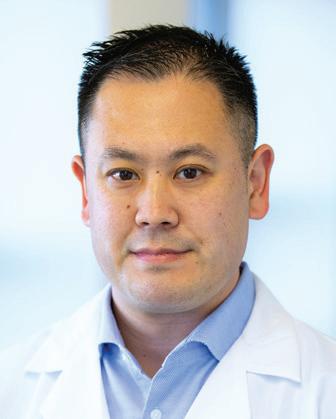
hesitate,” says Dr. Lee. “She was willing to sacrifice in order to get through the transplant.”
Yet there was another serious concern: In November 2021, Marcela contracted COVID-19 and was hospitalized. Discharged after 10 days, she developed a fever and returned to the hospital, where for five days she battled a type of severe pneumonia common in people with scleroderma.
“COVID didn’t have as dramatic an effect on her lung function as we’ve seen in some patients,” says Dr. Lee. “But we had to make sure that she was able to overcome the infection before even thinking about a transplant.”
Marcela’s transplant continued to be deferred as she fended off two more bouts of COVID in the months that followed.
She was finally placed on the transplant list in September 2022—and the wait for a donor organ began.
The call that would change everything came on February 14, 2023—Valentine’s Day. A fresh set of lungs was available, and Marcela’s family rushed her to the hospital. “I was happy but scared,” she says.
While her son and parents kept vigil in the waiting room, Marcela had bilateral lung transplant surgery performed by Jesus Gomez-Abraham, MD, Lung Transplant Surgical Director.
It was one of the first cases in New Jersey of ex vivo lung perfusion (EVLP), a highly specialized lung bioengineering organ preservation system. NBI is among several programs in the U.S. that participated in EVLP research and FDA-approved clinical trials— important milestones for the only lung transplant center in New Jersey.
When Marcela regained consciousness, she looked out the window from her hospital bed and thought, “Thank you, Lord.” Her son remained at her bedside during her monthlong hospital stay.
Marcela slowly regained strength. She proceeded with having a feeding tube after the surgery but before long was able to start eating again. No longer tethered to an oxygen tank, she breathes freely.
Immunosuppressive medications that Marcela takes to prevent her body from rejecting her new lungs have calmed her overactive immune system. In April, she even passed a high-altitude simulation test at Cooperman Barnabas Medical Center, clearing her for travel to visit relatives in Colombia.
“She can now eat, drive, shop and do activities that she couldn’t have dreamt of doing before her transplant,” says Dr. Gomez-Abraham. “She is doing very well and enjoying the gift of life.”
“The first year after transplant is crucial,” says Dr. Lee. “If patients can get through it without major issues, their survival prospects and prognosis become better. And Marcela has done that.”
He credits Marcela’s success to the many NBI people who are involved in the transplant process, from procurement of lifesaving organs to post-transplant rehabilitation.
“It’s really a team effort that includes our nurse coordinators, nurse practitioners, pharmacists, social workers, transplant surgeons, anesthesiologists, therapists, nurses and many others,” says Dr. Lee. “We work collaboratively to make sure our patients have the best possible outcomes.”
“We provide not just the transplant, like EVLP with lung bioengineering, but also a conglomeration of multispecialty and multidisciplinary services that are needed in conjunction with transplants—an approach that makes us successful,” says Dr. GomezAbraham.
“Getting a transplant has changed my life completely,” says Marcela. “I am very grateful.”

From hikes in the woods to days at the beach, there’s no shortage of amazing summertime adventures throughout the Garden State. Yet the increase in outdoor activities also raises the risks for injuries.

“Summer is a fantastic opportunity for adults and children to gather, socialize and have a great time,” says Eric Handler, DO, Chair of Emergency Medicine at Cooperman Barnabas Medical Center. “By
practicing a little caution and using sound judgment, people can make the most of the sunshine and avoid an unnecessary trip to the emergency department.”
Here, Dr. Handler unpacks seven common reasons for summertime emergency department visits and offers tips to help you avoid them.
Sunburn can be an emergency. While minorto-moderate sunburns can be treated at home with aloe vera and other over-the-counter remedies, severe sunburn can require emergency treatment. Warning signs include
blistering skin and uncontrollable pain. The true extent of a sunburn may take 12 to 24 hours to develop. Steps to prevent sunburn include using a sunscreen with a sun protection factor (SPF) of 30 or greater. Reapply it every two hours and every time you come out of the water. People should also consider wearing a brimmed hat and sunglasses to protect the face and eyes.
Heat cramps and heatstroke represent a spectrum of illnesses that occur when the body begins to lose the ability to regulate
its temperature. Heat exhaustion is marked by heavy sweating, dizziness, nausea and thirst. When heat exhaustion becomes heatstroke, it can cause confusion and even unconsciousness.
Heatstroke is a medical emergency— call 911. Children and the elderly are typically more likely to suffer from heatstroke.
To limit your risk of heat-related illness, stay properly hydrated. Water and fluids with electrolytes are the best options; limit soda and alcohol. Carry a reusable water bottle with you wherever you go, such as running errands or in the backyard, park or gym. Most public places offer water fountains for a refill. Thirst is a sign of dehydration, so if you feel thirsty, you have some catching up to do! Avoid outdoor exercise or other physical activity during the hottest times of day, typically early to mid-afternoon. Dehydration can turn a fun summer activity into an unpleasant experience at best or a trip to the emergency room at worst.
Fireworks are a time-honored summer tradition, but when used improperly, they can lead to serious burns, deep cuts and eye injuries. Reduce your risk by using legal fireworks and following all safety guidelines on the package. Never light fireworks in your hand. Leave duds alone; don’t walk up to them to see why they didn’t ignite. Douse all used fireworks in a bucket of water. If you have any doubts about handling fireworks safely, attend a community event and leave the seasonal show to professionals.
A little planning can help you stay on the field or court longer and avoid injuries like muscle sprains, muscle strains and twisted ankles. Always stretch and perform warm-up exercises prior to starting any kind of physical activity. Give yourself time to cool down after you play. Stay properly hydrated. If you’re cycling, skateboarding or riding a scooter, always wear a helmet. Avoid
aggressive speed and maneuvers when bicycling, riding a personal watercraft or operating any type of vehicle.
Trips and falls on the playground can lead to scrapes, bruises and lacerations. Keep children safe by always supervising them and limiting running and horseplay as much as possible. Look for playgrounds with softer ground cover such as rubber or mulch instead of asphalt or concrete. Discourage high-risk activities such as pushing a child higher on a swing than they find comfortable. Check the temperature of playground surfaces such as slides before children begin playing on them.
Deer ticks are most active in late spring and early summer. A tick bite can lead to an emergent condition called babesiosis, a bloodstream infection that brings flu-like symptoms such as body aches. Tick bites can also cause Lyme disease. The hallmark of Lyme disease is a rash that classically looks like a bull’s-eye. It occurs on average in about seven days at the site of the tick bite, which can cause fever, chills, headache, fatigue, and muscle and joint soreness. Ticks can be anywhere—in the woods or even in your backyard. Prevention includes wearing moisture-wicking, long-sleeved shirts; long pants; and tall socks to cover your skin. Most people don’t feel tick bites, so check yourself for ticks or signs of a bite when you step back inside.
Don’t let a friendly get-together go bad. Never light a gas grill
According to the Centers for Disease Control and Prevention, accidental drownings lead to about 8,000 emergency department visits nationwide each year. Ways to reduce the risk of drowning and potentially save a life include:
• KNOW: Small children can drown in shallow water.
• SUPERVISE: Make sure at least one adult swimmer provides constant supervision of any children near or in the water.
• PROTECT: Install fences and gates around home pools. Consider adding an alarm that alerts you anytime someone goes into the water.
• RESTRICT: Prohibit children from running around the outside of pools to reduce the risk of slips and falls.
• TEACH: Enroll children in swim lessons. Make sure they wear life jackets, vests and floaties in the water if they can’t swim.
• JUMP: Never dive headfirst into water unless you know how deep it is. Instead, wade in or jump in feetfirst.
• RESPECT: Always swim near a lifeguard. Heed red-flag warnings for high rip currents at the shore. If you get caught in a rip current, swim parallel to the shore.
with the lid closed. If the grill does not light immediately, let the gas dissipate before attempting to light again. Use only the amount of lighter fluid you need to start a charcoal grill. Cook any meat, seafood or poultry thoroughly and to temperatures recommended by the USDA. And keep food—along with your guests—safe by refrigerating leftovers so they don’t spoil in the sun.

RWJBARNABAS HEALTH BECOMES THE OFFICIAL HEALTH CARE PROVIDER FOR THE NWSL CHAMPION SOCCER CLUB.
Behind any elite professional sports team stands another team: a medical corps that keeps players healthy and performing at a high level.
To strengthen that support, NJ/ NY Gotham FC, the reigning National Women’s Soccer League champions, recently announced that RWJBarnabas Health (RWJBH), New Jersey’s most comprehensive academic health care system, will be the club’s official health care provider.
The multifaceted partnership reflects Gotham FC’s commitment to high-


quality player care and aligns with RWJBH’s and Gotham FC’s joint mission to build healthier communities.
RWJBH delivers best-in-class sports medicine and overall health care services to Gotham FC. The relationship offers the club the added advantage of harnessing resources and centers of excellence throughout the RWJBH system.
Jason Krystofiak, MD, CAQSM, Chief, Section of Sports Medicine, Cooperman Barnabas Medical Center (CBMC), will serve as the chief medical officer for Gotham FC. Dr. Krystofiak is also Medical Director of Sports Medicine and Medical Director of the Matthew J. Morahan III Health Assessment Center for Athletes at RWJBH. He currently serves as a team physician for Rutgers University Athletics and is the team physician for Rutgers Football.
Peter DeLuca, MD, Chief of Orthopedic Sports Medicine, CBMC,
will serve as the head team orthopedic physician for Gotham FC. Dr. DeLuca is the former head team physician for the Philadelphia Eagles and head of team orthopedics for the Philadelphia Flyers, and currently serves as a team physician for the New Jersey Devils.
Both Dr. Krystofiak and Dr. DeLuca are members of RWJBarnabas Health Medical Group.
“Care of elite athletes is very broad, and it takes a team effort from top to bottom,” Dr. Krystofiak says. “Everyone plays a role, and for athletes who are performing at the highest level in the world, every aspect of health needs to be optimized.”
A player who is injured or ill not only needs to have her health needs addressed appropriately but also needs to heal safely—and as quickly as possible. “Optimizing all aspects of



knows what the player can do based on a medical evaluation.”
Partnering with RWJBH helps expedite care in part by having worldclass experts and resources—including diagnostic imaging technologies such as MRI and CT scans—readily accessible through a single integrated health care system.
RWJBarnabas Health encourages you to visit a Gotham FC home game this season. Scan this code to purchase tickets at a special discounted rate.
health puts players in the best possible position to excel,” Dr. Krystofiak says.
Members of the health care team include not only the lead RWJBH physicians but also physical therapists, dietitians, athletic trainers, and sports science and performance experts, along with a wide variety of medical specialists and subspecialists.
“It’s imperative to have good communication among everyone on the team,” says Dr. DeLuca. “Players need their health back in order to perform, and part of our role is to ensure that everyone
RWJBH care for the club’s players includes performing physicals and examinations, and working with trainers and players to communicate about diagnoses, conditions, rehabilitation plans and preventive strategies to best support player fitness while keeping athletes on the field and performing at the highest level.
Among other initiatives, RWJBH and Gotham FC will also develop meaningful community outreach and education programs to engage with local communities on the importance of proper nutrition, healthy habits and preventive measures.
“As women’s professional sports continues to grow, this partnership will further support our women’s health initiatives and our joint mission of building healthier communities,” says Mark E. Manigan, President and Chief Executive Officer, RWJBH.
Additional highlights of the partnership include hospital visits, player appearances, and communitybased programs and special events such
as on-site fan engagement at Gotham FC’s home stadium, Red Bull Arena, along with health and wellness education and health screenings. The partnership will further include family-focused programming and integration with youth camps.
“Gotham FC is proud to welcome RWJBarnabas Health as the club’s official health care provider,” says Yael Averbuch West, Gotham FC General Manager and Head of Soccer Operations. “The partnership will provide exceptional care to our world-class roster of players, with services administered by renowned sports medical professionals who will help keep players performing at their peak levels.”
“With medical care at the forefront, we look forward to integrating our partnership far beyond the playing field,” says Gotham FC Senior Vice President of Partnerships Nan Vogel. “Through the development of new programming, together we will celebrate building healthy lifestyles and deliver great patient experiences, and collectively our impact will reach far into the communities we serve.”
“For RWJBH and our team of providers to be caring for the most elite women soccer athletes in the world is a wonderful opportunity,” Dr. Krystofiak says. “These players, who are of Olympic and World Cup caliber, are amazing athletes on the field and outstanding individuals off the field. It’s a privilege to be part of their health care team.”

Although every hip surgery is different, a world-class surgeon is always the right choice. Do it right. Here.
When you need relief from joint pain, you want nothing less than the highest level of orthopedic care. At RWJBarnabas Health, you’ll find board-certified surgeons using the latest treatments and technology, including robot-assisted joint replacement and other minimally invasive procedures, with physical therapy right on site. Visit rwjbh.org/ortho to learn more.